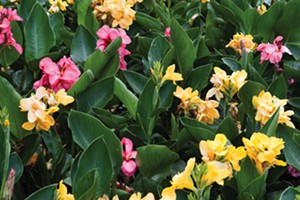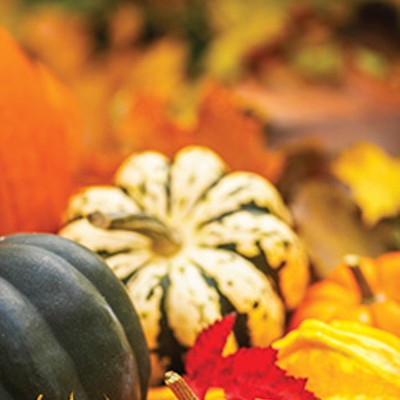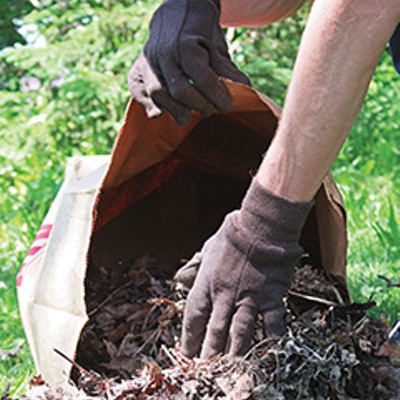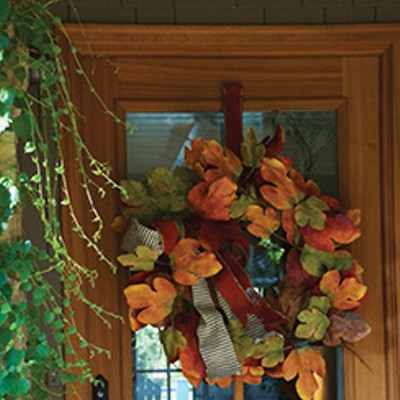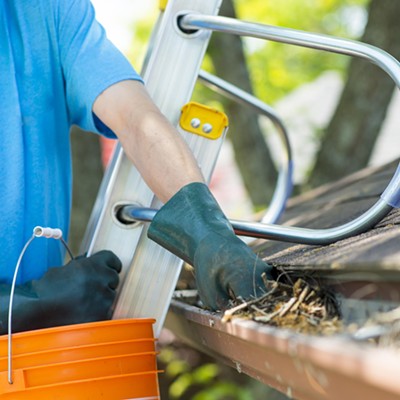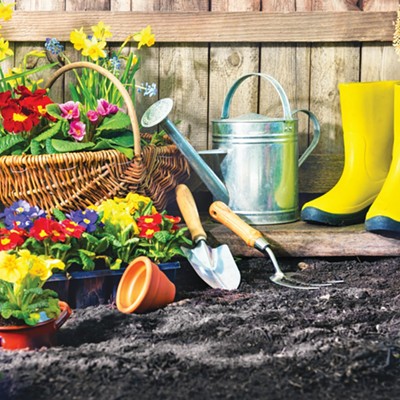Digging and storing cannas
[
{
"name": "Air - MedRect Combo - Inline Content 1",
"component": "11490391",
"insertPoint": "3",
"requiredCountToDisplay": "1",
"parentWrapperClass": "fdn-ads-inline-content-block"
},{
"name": "Air - MedRect Combo - Inline Content 2",
"component": "11490392",
"insertPoint": "7",
"requiredCountToDisplay": "5",
"parentWrapperClass": "fdn-ads-inline-content-block"
},{
"name": "Air - MedRect Combo - Inline Content 3",
"component": "11490393",
"insertPoint": "12",
"requiredCountToDisplay": "9",
"parentWrapperClass": "fdn-ads-inline-content-block"
}
]
Now is the time to devise a plan for digging and storing cannas.
To successfully overwinter cannas indoors, the bulbs should be dug up after the first light frost has killed the top of the plant. Although technically they are not bulbs, but rhizomes, cannas need to be treated as tender bulbs and must be dug up to survive the winter. Some gardeners have reported success with cannas overwintering in the ground in micro-climates or against south-facing walls due to the radiant heat from the building.
The most important thing to do when digging up rhizomes, tubers or any tender bulb is to be careful not to wound these fleshy underground structures. Wounds and bruises serve as entry points for diseases, which can cause rotting and loss in storage. This is true for any tropical plant with fleshy underground structures, such as elephant ears and caladiums.
Follow these simple steps to properly overwinter cannas indoors. Start by cutting back the foliage to four to six inches above ground in order to see the base of the plant. Dig several inches away from the base of the plant, avoiding the underground structures. Carefully loosen the soil using a spade shovel. Remove the large clump of multiple structures from below the soil level. Separate the clumps and remove most of the soil by hand, and wrap each individual structure in newspaper. Finally, layer them in a crate or large tote with the lid off. This is how they will remain stored until the following spring.
Be sure to monitor the bulbs every month for rotting pieces and pests. If found, remove infected pieces right away.
Often these structures multiply underground during the growing season. Even though you may have only planted three to five bulbs the past summer, you could have well over that number by the fall. As the structures multiply, plan to incorporate cannas into more parts of your landscape or share them with friends and neighbors.
As you read through the literature available, other sources will have varied recommendations for storing methods. Some horticulturists have been successful in overwintering cannas in an unheated garage or shed. Some tend to allow bulbs to cure and dry out for one to three days before storing. Others recommend removing all of the soil once dried and storing in peat moss or sawdust. I prefer to recycle newspaper. It acts as an aid in the curing process. The newspaper serves as a barrier that protects the structures from excess moisture. The main take-home point is to keep bulbs cool, dry and out of freezing temperatures.
To get a head start on the growing season, help bulbs emerge while indoors. Once the following spring comes around (about four to six weeks before the last average frost date) cannas can be planted in containers of professional potting mix. Unwrap the structures and plant them with the pointed side facing up. When using a large container (12 inches in diameter or more) multiple bulbs can be planted in the same pot.
Finally, place them in a sunny window or under artificial lighting and treat them as houseplants. The cannas can be planted outside after the danger of frost has passed.
You may store container-grown cannas by bringing in the whole container and storing them in a dark hallway closet. To do this, simply cut back the foliage after a light frost and place the container indoors. Let them remain dormant until the next spring and then put them in a sunny location. Amazingly, as they receive more sunlight, signs of leaf growth will begin. Over the past two years, my cannas have multiplied in the container and leave little to no room for planting other flowers. This container is now devoted solely to cannas, but over time, these structures will need to be divided and thinned out.
Cannas are an easy-care tropical plant that provides beautiful foliage and long-lasting blooms. Repeated blooms are encouraged by deadheading spent flowers. This versatile plant comes in a variety of leaf colors and can range from one foot to more than six feet tall. For the greatest foliage color and fullest blooms, place cannas in full sun with plenty of water and healthy soil.
University of Illinois Extension horticulture educator Nancy Kreith may be reached at
708-679-6889 or [email protected].
To successfully overwinter cannas indoors, the bulbs should be dug up after the first light frost has killed the top of the plant. Although technically they are not bulbs, but rhizomes, cannas need to be treated as tender bulbs and must be dug up to survive the winter. Some gardeners have reported success with cannas overwintering in the ground in micro-climates or against south-facing walls due to the radiant heat from the building.
The most important thing to do when digging up rhizomes, tubers or any tender bulb is to be careful not to wound these fleshy underground structures. Wounds and bruises serve as entry points for diseases, which can cause rotting and loss in storage. This is true for any tropical plant with fleshy underground structures, such as elephant ears and caladiums.
Follow these simple steps to properly overwinter cannas indoors. Start by cutting back the foliage to four to six inches above ground in order to see the base of the plant. Dig several inches away from the base of the plant, avoiding the underground structures. Carefully loosen the soil using a spade shovel. Remove the large clump of multiple structures from below the soil level. Separate the clumps and remove most of the soil by hand, and wrap each individual structure in newspaper. Finally, layer them in a crate or large tote with the lid off. This is how they will remain stored until the following spring.
Be sure to monitor the bulbs every month for rotting pieces and pests. If found, remove infected pieces right away.
Often these structures multiply underground during the growing season. Even though you may have only planted three to five bulbs the past summer, you could have well over that number by the fall. As the structures multiply, plan to incorporate cannas into more parts of your landscape or share them with friends and neighbors.
As you read through the literature available, other sources will have varied recommendations for storing methods. Some horticulturists have been successful in overwintering cannas in an unheated garage or shed. Some tend to allow bulbs to cure and dry out for one to three days before storing. Others recommend removing all of the soil once dried and storing in peat moss or sawdust. I prefer to recycle newspaper. It acts as an aid in the curing process. The newspaper serves as a barrier that protects the structures from excess moisture. The main take-home point is to keep bulbs cool, dry and out of freezing temperatures.
To get a head start on the growing season, help bulbs emerge while indoors. Once the following spring comes around (about four to six weeks before the last average frost date) cannas can be planted in containers of professional potting mix. Unwrap the structures and plant them with the pointed side facing up. When using a large container (12 inches in diameter or more) multiple bulbs can be planted in the same pot.
Finally, place them in a sunny window or under artificial lighting and treat them as houseplants. The cannas can be planted outside after the danger of frost has passed.
You may store container-grown cannas by bringing in the whole container and storing them in a dark hallway closet. To do this, simply cut back the foliage after a light frost and place the container indoors. Let them remain dormant until the next spring and then put them in a sunny location. Amazingly, as they receive more sunlight, signs of leaf growth will begin. Over the past two years, my cannas have multiplied in the container and leave little to no room for planting other flowers. This container is now devoted solely to cannas, but over time, these structures will need to be divided and thinned out.
Cannas are an easy-care tropical plant that provides beautiful foliage and long-lasting blooms. Repeated blooms are encouraged by deadheading spent flowers. This versatile plant comes in a variety of leaf colors and can range from one foot to more than six feet tall. For the greatest foliage color and fullest blooms, place cannas in full sun with plenty of water and healthy soil.
University of Illinois Extension horticulture educator Nancy Kreith may be reached at
708-679-6889 or [email protected].
Illinois Times has provided readers with independent journalism for almost 50 years, from news and politics to arts and culture.
Your support will help cover the costs of editorial content published each week. Without local news organizations, we would be less informed about the issues that affect our community..
Got something to say?
Send a letter to the editor and we'll publish your feedback in print!

